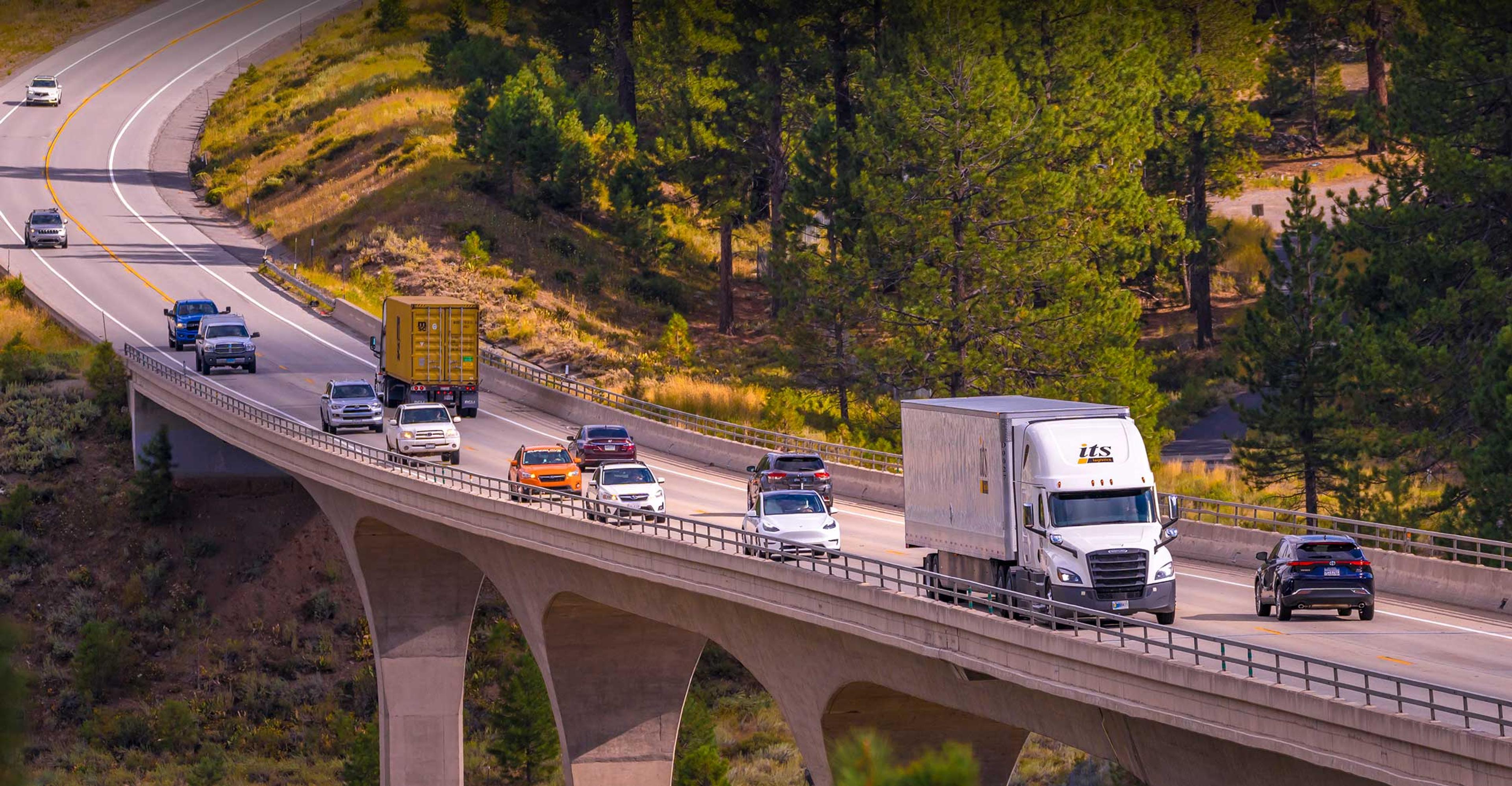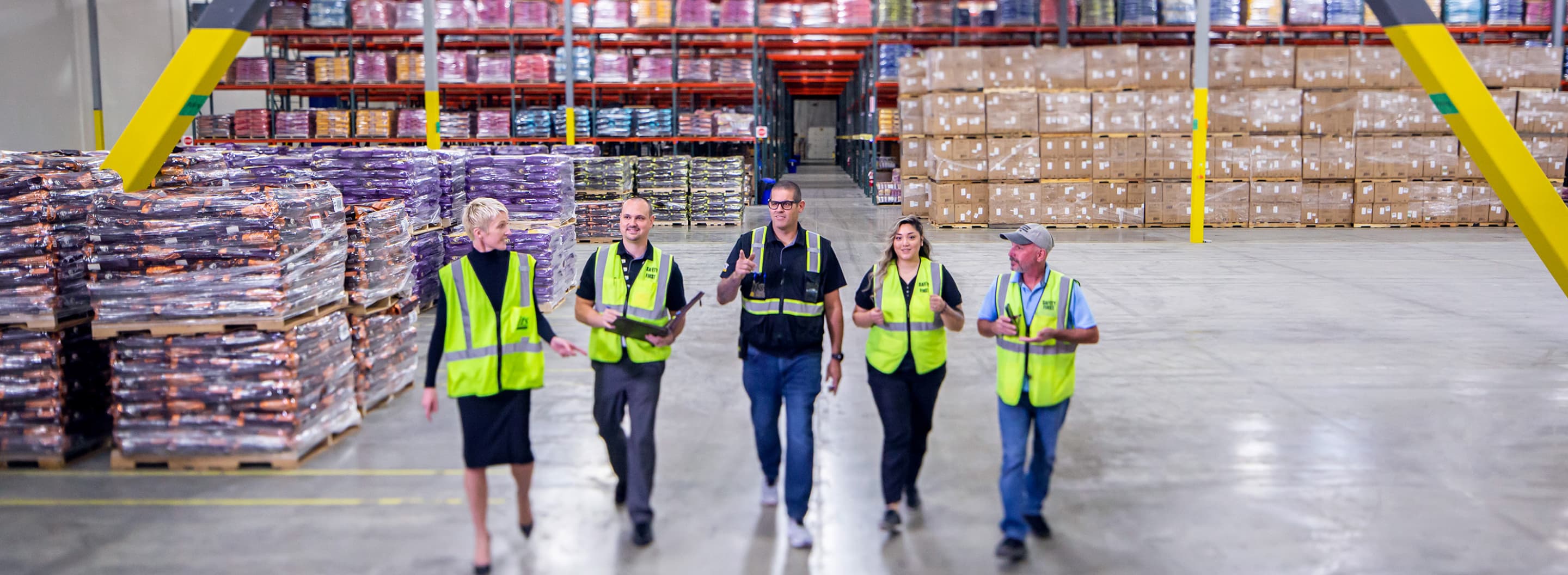
Did you know that large trucks roughly move around 11.18 billion tons of freight annually? That’s a TON of freight! With roughly 13.5 million trucks on U.S. roads, logistics is the backbone of our economy, keeping shelves stocked and businesses running. But with trucks weighing up to 80,000 pounds, they have a big impact on road safety. In fact, The Federal Motor Carrier Safety Administration (FMCSA) has reported approximately 500,000 accidents involving large trucks happen each year. While the majority of these incidents are caused by passenger vehicles, the sheer size and weight difference play a major role in the severity of these accidents.
To put it in perspective, the average passenger vehicle weighs just 2,600 to 4,400 pounds—no match for the massive trucks that keep our economy moving. Understanding these differences is key to ensuring we all share the road safely with these freight giants year-round.
Because we value and appreciate our drivers so much, we make it a priority to educate the community on safe driving practices around large trucks. This commitment to safety and support extends well beyond Driver Appreciation Week—it’s how we show our appreciation every day of the year.
Here are 10 safety tips that both commercial and non-commercial drivers can put into practice when sharing the road with large trucks. These simple habits can make a big difference in helping everyone stay safe on the road.
Keep a Safe Distance
Tailgating a truck presents significant dangers. Always maintain a safe following distance and stopping distance behind these vehicles, as they require more time to stop and go due to their weight. If you’re too close, you risk entering their blind spot, which reduces your ability to react quickly if they slow down or stop suddenly. Because trucks are so high off the ground, if you fail to stop in time or get hit from behind, your vehicle could slide under the truck, leading to devastating consequences. Additionally, getting too close when stopped can be dangerous—especially on an incline—where a truck might roll back. Keeping a safe distance helps prevent these potentially catastrophic situations.
Stay out of the Blind Spots
Trucks have extensive blind spots on all sides—front, back, and along both sides—making it essential to stay out of these areas. A good rule of thumb is: if you can’t see the truck driver in their side mirrors, they likely can’t see you either. Remaining visible is key for your safety. Be especially cautious when merging or driving alongside a truck, as you could be in one of these blind spots without realizing it. Keeping a safe distance and staying visible ensures that the truck driver is aware of your presence, helping prevent potential accidents.
Pass Safely and Swiftly
When passing a truck, it’s important to do so both swiftly and safely. Always pass on the left side, as passing on the right can be dangerous due to limited visibility for the truck driver. Be sure to signal clearly before changing lanes and avoid lingering in the truck’s blind spots for any length of time. A good rule of thumb is to wait until you can see the entire truck in your rearview mirror before merging back in front, ensuring there’s plenty of space for everyone’s safety.
If a truck is passing you, it's best to stay in the right lane and gently reduce your speed, allowing the truck to pass more easily. This helps you move out of the truck’s blind spot quickly, creating a safer environment for both you and the truck driver. Taking these extra precautions can significantly reduce the risk of accidents and make the road a safer place for everyone.
Give Trucks Space to Turn
Trucks need significantly more space to navigate turns, especially when making right-hand turns, which often require them to swing wide. It’s important to never attempt to squeeze between a turning truck and the curb, as this can be extremely dangerous. Trucks need that extra room to complete their turn safely, and positioning yourself in that space puts you at risk of being caught in a dangerous situation. Always give trucks ample space when they’re turning and be patient—ensuring they have enough room to maneuver helps keep everyone on the road safe.
Use Your Signals Early
When driving near trucks, it’s essential to signal your intentions well in advance, whether you’re changing lanes or making a turn. Trucks require more time to react to the movements of other vehicles due to their size and weight. Failing to provide them with enough warning can lead to dangerous situations and potentially severe damage in the event of a collision. By giving clear, early signals, you allow truck drivers the time they need to adjust safely, ensuring smoother and safer transitions on the road for everyone.
Be Patient
Trucks operate at a different pace, taking longer to accelerate, slow down, and maneuver. Avoid aggressive driving behaviors, like honking or weaving in traffic, as these won’t speed up your journey and can create dangerous distractions. Instead, practice patience and give trucks the space they need. By staying calm and focused, you enhance your safety and contribute to a more harmonious driving environment for everyone. A moment of patience can prevent accidents and lead to smoother travel for all.
Be Mindful of Weather Conditions
Driving cautiously around trucks is essential every day, but it becomes even more crucial in adverse weather conditions like rain, snow, or fog. These conditions can reduce visibility and road traction, making it harder for trucks to maneuver. Increase your following distance to allow for the longer stopping times trucks need on slippery surfaces. A little caution can make a significant difference in ensuring a safer journey for both you and truck drivers, especially in inclement weather.
Stay Focused and Alert
Distracted driving poses a significant danger to everyone on the road, particularly when it comes to sharing the pavement with large trucks. Staying focused and alert is crucial, as these massive vehicles require more time and space to react to sudden changes in traffic. By avoiding distractions—whether it's your phone, adjusting the radio, or any other interruptions—you can maintain a clear line of sight on the road ahead.
Being prepared for the unexpected allows you to respond quickly to any potential hazards, ensuring not just your safety but also the safety of those around you. A moment of vigilance can make all the difference in creating a safer driving environment for everyone, fostering a culture of responsibility and awareness on the road.
Buckle Up
Wearing your seatbelt is one of the most vital actions drivers and passengers can take to ensure their safety and save lives. It’s not just a legal requirement; it’s a crucial safeguard in the event of an accident. A seatbelt acts as your best defense against serious injury, significantly reducing the risk of being ejected from the vehicle or suffering life-threatening trauma. By buckling up every time you get in the car, you not only protect yourself but also set a responsible example for others. Remember, taking this simple step can make all the difference in the world when it comes to road safety.
Never Drive Under the Influence of Alcohol or Drugs
There is never a time when driving under the influence of alcohol or drugs is acceptable. Impairment significantly affects your reaction time, judgement, and coordination, making it difficult to navigate safely around any vehicles. Driving impaired increases the risk of accidents not only for you but also truck drivers and other road users. Staying sober behind the wheel is essential for a safe driving experience and a responsible choice for everyone on the road.
Safety: A Shared Responsibility
Keeping truck drivers safe on America's roads is a shared responsibility that requires awareness and caution from all drivers. With approximately 11.18 billion tons of freight being transported annually by around 13.5 million trucks, the logistics industry plays a vital role in our economy, making it vital that every driver must prioritize safety when sharing the road.
The statistics speak for themselves, with around 500,000 accidents involving large trucks reported each year, often resulting from passenger vehicles not understanding the unique challenges posed by these freight giants. By implementing safe driving practices, we can all contribute to a safer driving environment.
At ITS Logistics, we are dedicated to promoting safe driving awareness that extends beyond Driver Appreciation Week. Our commitment to education and support for truck drivers reflects our belief that every journey should be safe, for both drivers and the communities they serve. By raising awareness and taking proactive measures, we can protect our truck drivers and ensure safer roads for everyone. Let’s work together to foster a culture of safety and responsibility on the highways, making a positive impact on the lives of truck drivers and all road users across the nation.



